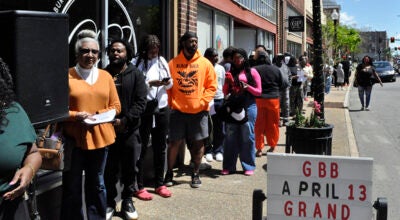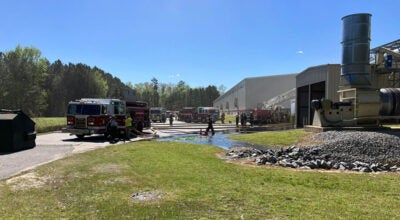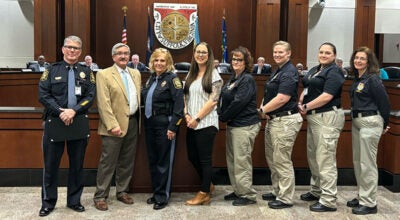Prepare and plan, health care administrator says
Published 10:37 pm Wednesday, September 26, 2012
A local woman who ran a nursing home in Louisiana when Hurricane Katrina battered the state in 2005 spoke at a medical volunteer meeting Tuesday in honor of National Preparedness Month.
Linda Rogers, who now runs Consulate Health Care in Windsor, spoke at the Western Tidewater Medical Reserve Corps’ quarterly meeting and ninth birthday celebration. Her compelling story illustrated the benefit of preparedness for businesses and individual families.

Linda Rogers, a former nursing home administrator in New Orleans, talks about the effect Hurricane Katrina had on her family and nursing home.
Rogers became administrator at Metairie Health Care Center just three months before Hurricane Katrina bore down on Louisiana in late August 2005. The one-story building is located between the Mississippi River and Lake Pontchartrain.
Rogers said the home, which had 120 residents, had an emergency evacuation plan. But by the time it became clear Katrina would strike the city and a mandatory evacuation was ordered, the company with which the nursing home had an agreement had only one driver available.
“Was I to say who goes and who stays?” Rogers said. “These were tough decisions. Things began to get a little tense.”
All day on Sunday, Aug. 28, the day before the storm hit full force, Rogers fielded “nasty calls” from residents’ family members, sent home a staff member who was “in hysteria” and “called all my children and said my goodbyes,” she said.
She and the nursing home’s owner made a big pot of coffee and paced until late that night, when a weather update was issued that seemed to provide some hope. They decided the residents — as well as the staff and their families who had come for shelter — would attempt to ride out the storm in the nursing home.
Residents were moved into corridors to keep them away from windows and walls. Exterior doors were shut with bungee cords to prevent them from flying open.
“You didn’t have time to be afraid,” said Rogers, who described watching her own car float away. “Life went on as usual.”
Once the storm hit full force, though, things began to look different. Parts of the building collapsed as the outside pressure took advantage of weak spots. Water poured in around the doors from the tops and sides.
“We had more water coming in than we could get out,” Rogers said.
Around the time the building started to flood, emergency officials called to make sure everything was all right.
“We told them we were taking on water,” Rogers said. “It seemed like there was no end. There was water everywhere.”
State troopers and wildlife officials responded and began the evacuation. Soon, mini-buses were delivered and residents — grumpy because they had not gotten their evening medications — were piled in.
The evacuation went on throughout the night until 6:30 the next morning. Residents and staff were taken to college campuses and other nursing homes further inland, wherever there was room.
Only one resident, who had been on hospice care before the storm, died a couple days after the evacuation, Rogers said.
As for her own family, her home was still standing but had several feet of water. They lived upstairs for almost a year, she said.
Rogers stressed that the key to getting through a disaster is preparedness.
“Preparation on the front end makes a big difference,” she said.
For more information on the Western Tidewater Medical Reserve Corps, visit www.vdh.virginia.gov/mrc/wtmrc/index.htm.





